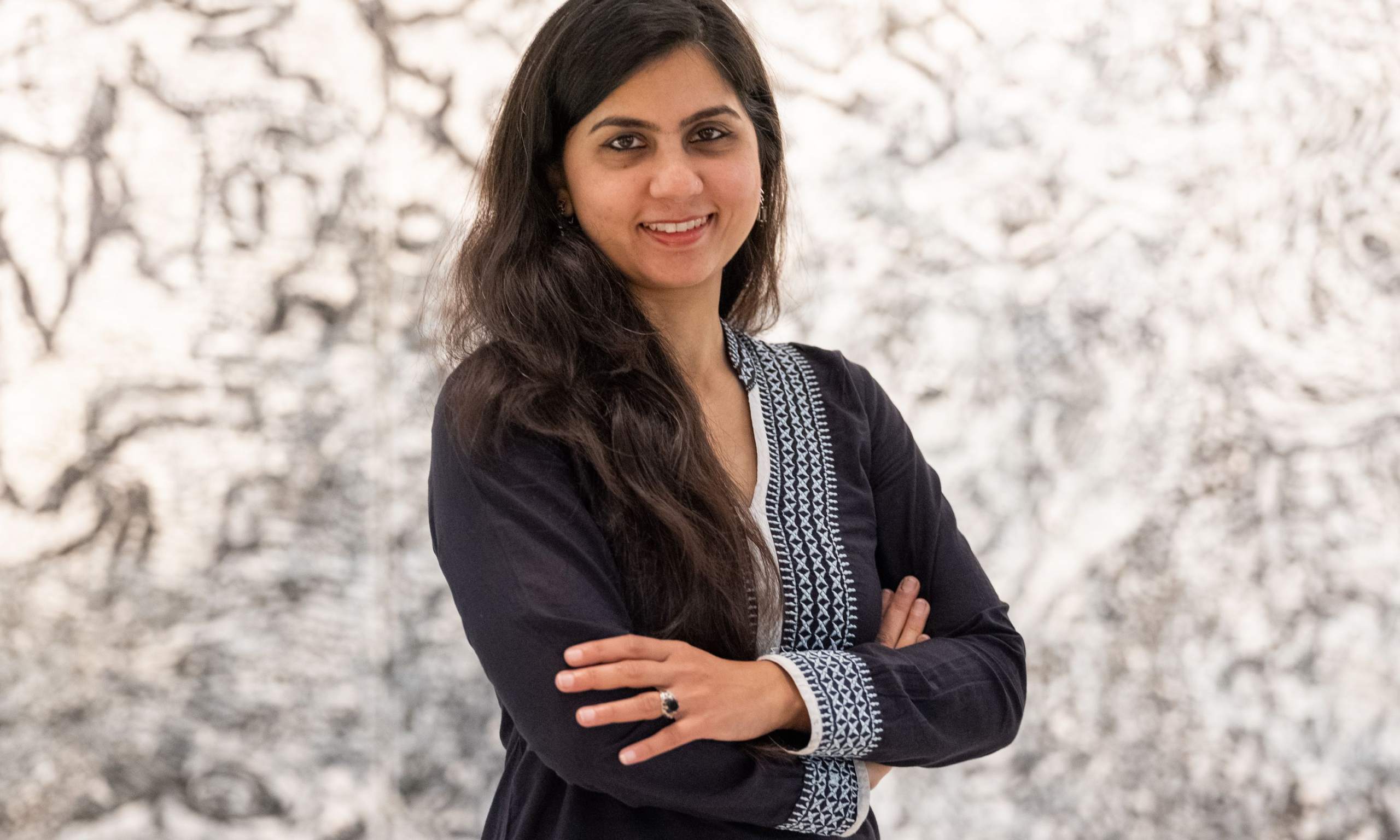Simrin Mehra-Agarwal in front of her work Break the Atom and Vegetal Forms (After Zeid, 2022) at Louvre Abu Dhabi
Photo: Augustine Paredes – Seeing Things. Courtesy Department of Culture and Tourism, Abu Dhabi. Artwork © the artist
Ten artists from across the Gulf have been nominated for the second Richard Mille Art Prize. The full list can be found here.
Work by the artists is on show at Louvre Abu Dhabi until 19 March and the winner will be announced 20 March.
Simrin Mehra-Agarwal has always been inspired by “climbing to the heights of the mountain and diving deep in the sea”. She is an experienced technical diver and regularly visits submerged sites in the Gulf around the UAE, documenting the disintegration of sunken boats and other man-made objects discarded in the water, including tanks and other machines of war. “When the wrecks degenerate they break apart and become abstracted. You have natural forms, botanical forms, abstract forms, taking over the wreck. They grow over them.”
She documents the growth of algae, bacteria and, eventually, plant life on the rusting wrecks. “The work talks about that journey—it talks about a liminal space in nature, which is the time between destruction and creation. When something gets destroyed it gets remade. Nature recreates itself. The war machines which are symbols of destruction and violence become symbols of hope and rebirth.”
Born in Kolkata, India, in 1979, Mehra-Agarwal studied painting at the University of Delhi before learning about sculpture at Central Saint Martins. This led to the expansion of her practice, introducing materials such as plaster, fibreglass and sand into her works. She combines her drawings in a freeform way, overlapping depictions of the decaying machines with up-close looks at small flora.
Mehra-Agarwal has lived in Abu Dhabi for ten years and is currently working on a project for its under-construction Guggenheim; she is also the artist-in-residence at the arts centre Manarat Al Saadiyat, which hosts the Abu Dhabi Art Fair. It was on another residency, at the Cultural Foundation, that she started working on large-scale pieces. The work on show in the Louvre, Break the Atom and Vegetal Forms, occupies an entire gallery wall and had to be created in situ. “I had visitors to the museum watching me and asking questions while I worked,” she says with a grin.

